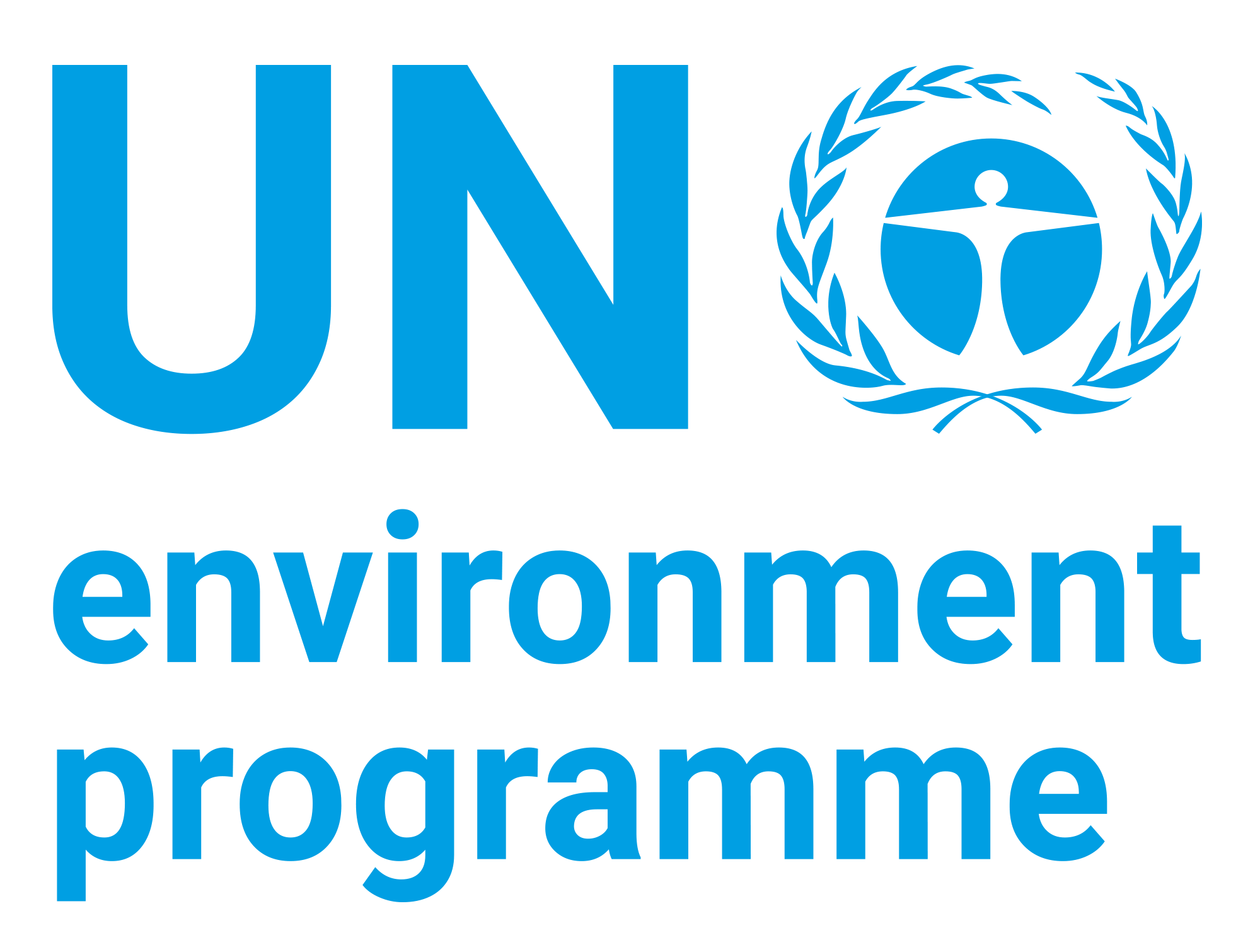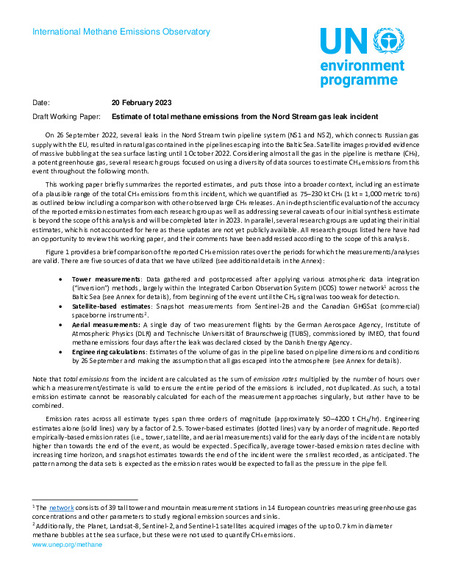| dc.contributor | Europe Office | en_US |
| dc.contributor.author | United Nations Environment Programme | en_US |
| dc.contributor.author | International Methane Emissions Observatory | en_US |
| dc.coverage.spatial | Europe | en_US |
| dc.date.accessioned | 2023-02-15T09:46:55Z | |
| dc.date.available | 2023-02-15T09:46:55Z | |
| dc.date.issued | 2023-02 | |
| dc.identifier.uri | https://wedocs.unep.org/20.500.11822/41838 | |
| dc.description | On 26 September 2022, several leaks in the Nord Stream twin pipeline system (NS1 and NS2), which connects Russian gas supply with the EU, resulted in natural gas contained in the pipelines escaping into the Baltic Sea. Satellite images provided evidence of massive bubbling at the sea surface lasting until 1 October 2022. Considering almost all the gas in the pipeline is methane (CH4),
a potent greenhouse gas, several research groups focused on using a diversity of data sources to estimate CH4 emissions from this event throughout the following month. This working paper briefly summarizes the reported estimates, and puts those into a broader context, including an estimate of a plausible range of the total CH4 emissions from this incident. | en_US |
| dc.format | pdf | en_US |
| dc.language | English | en_US |
| dc.rights | Public | en_US |
| dc.subject | methane | en_US |
| dc.subject | gas | en_US |
| dc.subject | greenhouse gas emission | en_US |
| dc.subject | Europe | en_US |
| dc.title | Estimate of Total Methane Emissions from the Nord Stream Gas Leak Incident - Draft Working Paper | en_US |
| wd.identifier.sdg | SDG 3 - Good Health and Well-Being | en_US |
| wd.topics | Chemicals and Pollution Action | en_US |
| wd.identifier.pagesnumber | 3 p. | en_US |


